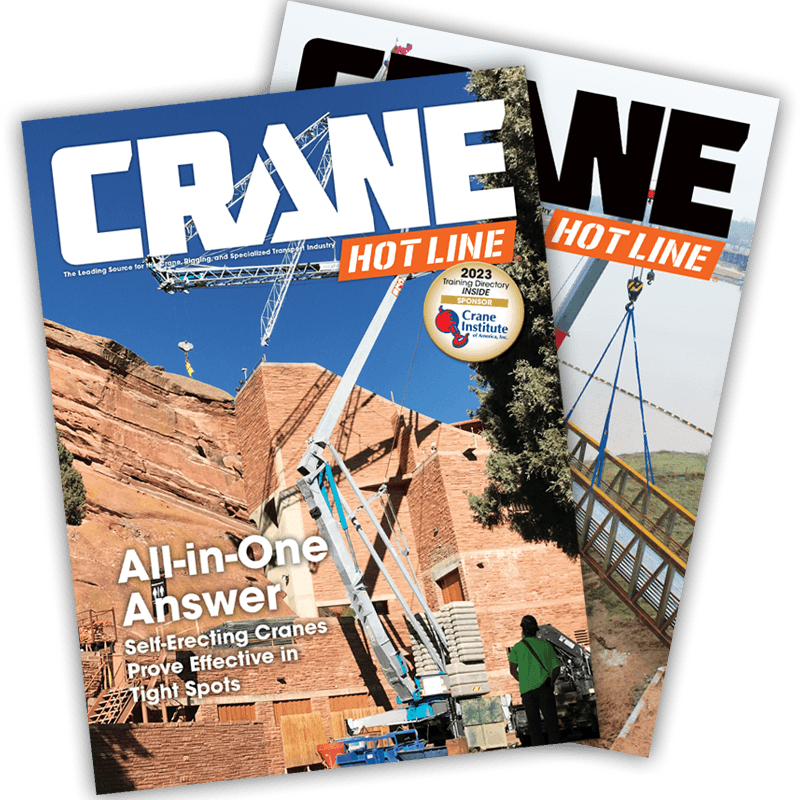Built from the Ground Up
April 4, 2007 • Taking a popular telehandler model and making significant changes is no simple task. Not only does the manufacturer have to make functional adjustments in order for the machine to be more efficient, but it also must indulge its customers by continuing the use of “old favorites” in the new design.

Enlarge Image
Genie's redesigned GTH-1056 telehandler incorporates new functions and old favorites.
Less than two years ago, Genie Industries,
The first two models that Genie made significant changes to were the GTH-1056 and GTH-1048. A prototype of the 1048 is currently being built, while the first prototype of the redesigned 10,000-pound capacity GTH-1056 was shown at The Rental Show in February. Built from the ground up in less than 18 months, Luke Webber, product manager, said Genie surveyed people in the industry when making improvements.
“As we do with every redesign or new model introduction, we started by getting feedback from industry professional on our previous GTH-1048 and GTH-1056,” Webber said. “From sales, operations, and service managers to end-operators, we surveyed our customers from around the country for months to get this valuable feedback. We then established a goal for this redesign to deliver a machine to our partners/customers that performed well, was simple and reliable, and offered the best overall value in the 10,000-pound telehandler market.”

Revised specs
The GTH-1056 is the only 56-foot lift height unit on the market that weighs less than 30,000 pounds, Webber said. With one of the best load-carrying capabilities on the market, the GTH-1056 can lift 10,000 pounds at the 15-foot horizontal reach with stabilizers down; 10,000 pounds capacity at the 32-foot vertical height with stabilizers down; 3,000 pounds at 41'9” horizontal reach with stabilizers down; and 500 pounds at 41'9” horizontal reach with stabilizers up, which was maintained from its predecessor.
Weighing 29,800 pounds, the GTH-1056 is 2,000 pounds less than the earlier model, and it is more compact. The machine is now 21'8” long and 8'5” feet tall, compared to 23'0” length and 9'9” height of its predecessor. Creating a more compact chassis allowed the steering geometry to improve from 35° to 45°. This resulted in a significant improvement to the turning radius from 17'3” to 13'6”, which makes the machine more mobile on congested or small jobsites.

Engine updates
One of the most significant changes on the GTH-1056 is the engine position, which has been moved to the rear and doubles as the counterweight. Customers have the option of using either a 127-hp Perkins or 125-hp John Deere Tier 3-compliant turbocharged diesel engine. The engine also is mounted on a rail system, making it easy to lift out with a forklift for major servicing. According to Webber, customers valued the reliability and performance of the previously used transmission and axles, so the newly designed machine also includes a Dana Spicer drivetrain.
For operators, the rear-axle stabilization system has changed from locking out at a 56° boom angle, as it did with the previous model. On the redesigned unit, the rear axle is free to float up to 59°. At 60° to the max boom angle, the telehandler will continue to drive, but the axle float is hydraulically dampened by a single rear axle stabilizing cylinder. Above 60° with the boom extended at or above 43 feet, the axle locks its position in a four-point stance, transmission is disengaged, and frame-leveling is disabled. Webber said this system was developed to achieve better productivity results.

Enlarge Image
Tires on the GTH0156 no longer require calcium chloride for ballast
On the chassis, the fuel and hydraulic tanks are now side-mounted in a heavy-duty steel tank. The fuel tank capacity has been increased from 30 to 35 gallons, and the GTH-1056 has an improved range of auxiliary hydraulic flow from 3 to 7 gpm to 3 to 15 gpm. Genie offers a lockable option on the large access panels. Frequent service points also have been relocated on the top of the chassis, while everything under the chassis has been tucked up in the machine for protection.
Other features of the chassis include the axle-mounted stabilizers, a single-frame leveling cylinder that has 10° either side instead of two; eight tie-down locations; and a 29,000-pound tow capacity. The GTH-1056's rough terrain tires also no longer require calcium chloride for ballast and are now air-filled as standard. Foam-filled and rock lug are optional.

Boom and carriage improvements
The four-section boom also has been updated, moving away from rollers to incorporate the more commonly used wear pads, which Webber said reduces the cost to the owner. An internal cartridge cable/hose track system allows the entire boom hose assembly to be removed without disassembly of the boom sections which significantly reduces the downtime of a machine.

Enlarge Image
The boom has been updated to use wear pads rather than rollers.
At the fork carriage, the forks can slide in within one inch of each other for masonry load-handling capabilities. Using a quick-attach system and auxiliary hydraulic circuit, the GTH-1056 can use Genie's 6,000- and 8,000-pound capacity attachments, as well as some competitors attachments. According to Webber, with these improvements, the new Genie machine offers improved operator efficiency and machine versatility as a pick-and-place or tool carrying telehandler.

New cab design


